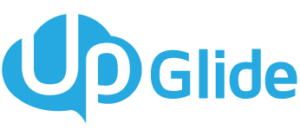8 Components of an Effective Job Description
A job posting should clearly portray a snapshot of the available position and compel target candidates to apply by delivering necessary information. Here are 8 components of an effective job description to attract more qualified job seekers for available positions.
1. Job Title
When creating a job title, the title should accurately depict experience level and responsibilities that the employee will perform. The title should be standard enough for relevant job seekers to find it in a search. Standardization is also useful for comparing across positions of parity in compensation and responsibilities.
2. Job Description
After the job title is established, write a 1-3 sentence job description highlighting how the position delivers value to your organization. This should summarize the most pertinent aspects of the job. The details will follow in the next section, “key responsibilities”. Monster provides sample job descriptions by job title for some examples.
3. Key Responsibilities
Establish 5-15 essential responsibilities that the employee will execute. These should be concise in bullet format, and each responsibility should begin with a present-tense action verb. If you need some verb ideas view this list of awesome action verbs. Each point should list the action to be taken followed by the purpose of completing it.
4. Skills and Qualifications
This section is comprised with educational level, years of experience, technical skills, and certifications requirements. This section is relevant for effectively filtering out unqualified job seekers. Skills and qualifications that are mandatory should be distinctively separate from those that are preferred. If candidates absolutely must have a credential to be considered, explain the credential’s relevance to job competency.
5. Supervisor & Department
It is important to include details on whom the employee will report to and where the employee will fall in the organization’s hierarchy. If the job is team oriented, explain who the employee will be interacting with on a regular basis. This helps applicants understand the lines of authority and working relationships defined in the role.
6. Employment Type & Benefits
Be transparent about the position’s non-exempt or exempt status. If it is a contract position, specify if it is temporary or contract-to-hire and quantify the duration of employment. Include details on where the position in located. If the position requires travel, denote a percentage to amount of travel required (i.e. < 50%). List any benefits that will be provided to the employee such as medical insurance, 401(K), and paid time off accrual.
7. Company Overview
Candidates should have a brief overview about the hiring company, so they understand the company culture and landscape. Include information about corporate values, objectives, geographical presence, and work environment.
8. Contact Information
Provide contact information in case applicants have questions or technical difficulties submitting their application.
About UpGlide
UpGlide is the cloud-based contingent workforce management platform that creates diverse user experiences through versatility. Upglide provides centralization for workforce management tools, including job description templates that can be repurposed to place job orders. Assess, qualify, and hire candidates in one seamless transaction with UpGlide.
Interested in learning more about UpGlide?


